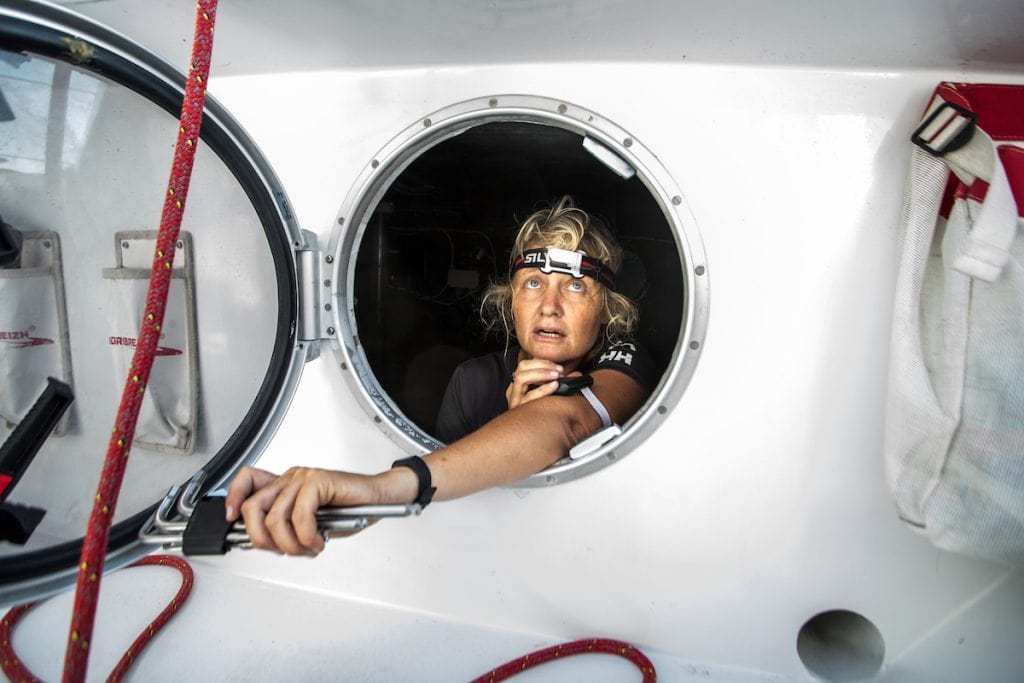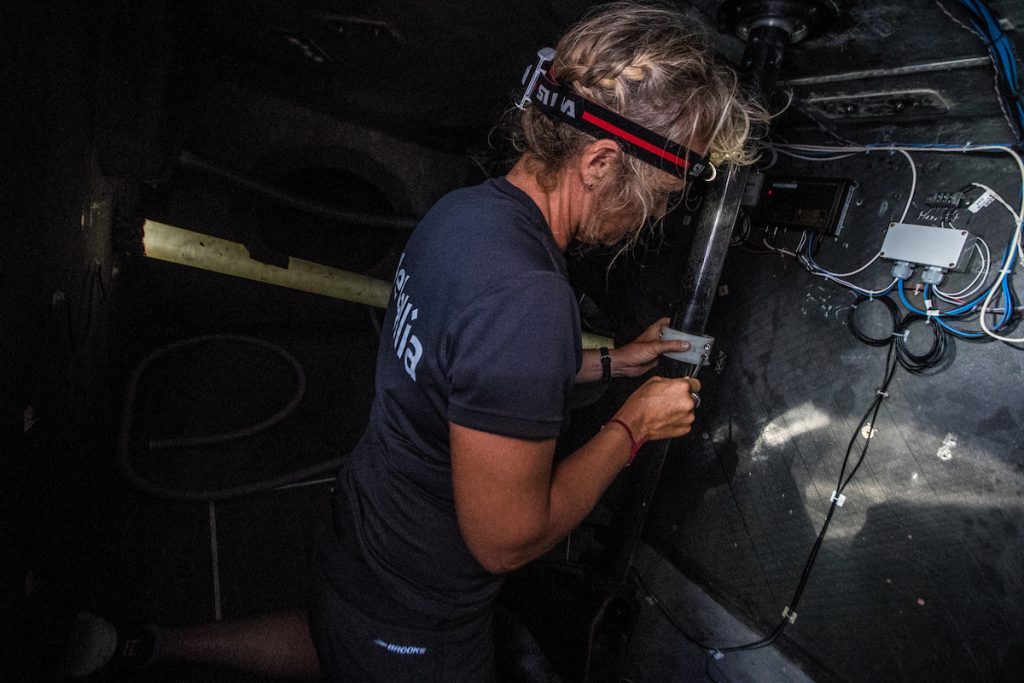Last month, Pip Hare became only the eighth woman to finish the Vendée Globe round the world yacht race, and the first British skipper to complete this year’s edition. Pip took 95 days, 11 hours and 37 minutes to complete the 24,365 mile non-stop solo journey, in a race considered one of the toughest sporting events in the world.
Both Evolve and Inspire are proud to have supported Pip from the earliest stages of her campaign, and she recently hosted an online talk in which she discussed everything she went through to finish the race.
Here are five key takeaways from that talk, and how her experiences translate to important life and business lessons for us all…
1. When times are tough, adjust your perspective
The Vendée Globe started on November 8th, two weeks after France—the race start—had been plunged into another lockdown. Restrictions meant competitors had limited access to their boats and were denied the usual fanfare and engagement in the racing village. This also meant the skippers’ families were not allowed to be there.
“I struggled a lot with this,” Pip says. “It felt like part of what I’d dreamed of, what I’d been aiming for, had been taken away from me. I was devastated that my parents weren’t able to be at the start. However, I was also aware that I was allowed to do this race when so many other athletes were having their opportunities taken away from them.
“I made a decision really early on that no matter how awful things got, to always remember the fight I’d had to get there, and how much me and everyone had put into the campaign to put me into the race; I was just so happy to be there.”
2. It’s not the age of the boat that matters, it’s the person sailing it
At 21 years-old, Pip’s yacht Medallia was the second-oldest boat in the fleet. It was also nowhere near as fast as the modern (and more expensive) hydrofoil boats, which the top competitors were using. Despite this, Pip topped the leaderboard for the fastest 24 hours a couple of times during the race and ended up finishing ahead of a few hydrofoils overall.
“Two weeks into the race, I resolved to push a bit harder than my competitors,” Pip says. “There were key moments where I realised if I just gave that little extra bit, it would have a real impact on my performance. I really shouldn’t have been on top of any leaderboard with such an old boat.”

3. You’re capable of a lot more than you imagine
The Vendée Globe is an intense physical and mental challenge. You’re alone at sea for three months, often very far away from help should things go wrong. It’s completely up to you to navigate the course, to make split-second decisions, and to maintain both the boat’s and your own wellbeing.
Pip had to overcome several equipment breaks and wearing during the race, the most challenging of which was having to repair a broken rudder in the choppy Southern Ocean. Numerous times prior to the race, Pip had practiced replacing a rudder, but in a calm marina, with people to help.
“Doing it in the Southern Ocean, between gales, was scary, but I had no choice but to make it happen,” Pip says. “I made the decision that I was going to do this now, and when I look back at it now, I realise what a hard thing it was to do. Could I do it again? I don’t know. But in certain situations, you’re forced into doing these extraordinary things because you have no choice.”
About halfway into the race, Pip was stung by a Portuguese man ‘o war bluebottle, which resulted in a painful rash over most of her body. It lasted four weeks. “It was agony,” Pip says. “And the hot weather made it worse. For that whole time I was having to look after myself more than the boat. I never thought I would end up in that situation, but my competitive spirit wouldn’t let go.”
4. Preparation is everything

Three months alone in such an extreme environment is a very long time. Pip brought the bare minimum equipment with her, slept (when she could) on a bean bag or on the floor, and washed with sea water. With no help immediately at hand, it was vital that Pip was as prepared as she could be to not only survive but thrive during the race.
“Looking after yourself becomes a daily task that you make sure is done well,” she says. “I worked on a diet plan with a nutritionist, and had a 10-day rolling menu combined with supplements. You have to keep your boat in one piece, but also yourself. You have to maintain a level of energy that is really quite high, and tackle every problem head-on.
“It can be scary to be alone in the middle of the ocean, remembering how far from help you are. But then you remember how well-prepared you are, and that gives you confidence in yourself.”
5. Don’t wait until everything is perfect to start
Thinking there will be ‘a right time’ to start something is something most of us are guilty of. The problem is there will never be a right time. The right time is now. If you feel even 75% ready to do something, do it, before that old enemy procrastination sets in.
“I went into the race knowing, and accepting, that my boat is the hardest in the fleet to sail,” Pip says. “When I finished the race, what really surprised me was all the other skippers coming to see me and telling me they couldn’t believe I’d just sailed around the world in this boat.”
Top sailor Jean Le Cam called Pip “the spirit of the race” for her bravery and determination.
Pip says, “I hope I’ve inspired others to understand that you don’t have to have it all perfect to go out and do something incredible. Start where you can, use what you’ve got and give it everything you’ve got, because people will notice. You can still perform, eve when you’ve got a 21 year-old boat.”

— Images supplied by Richard Langdon/Pip Hare Ocean Racing
